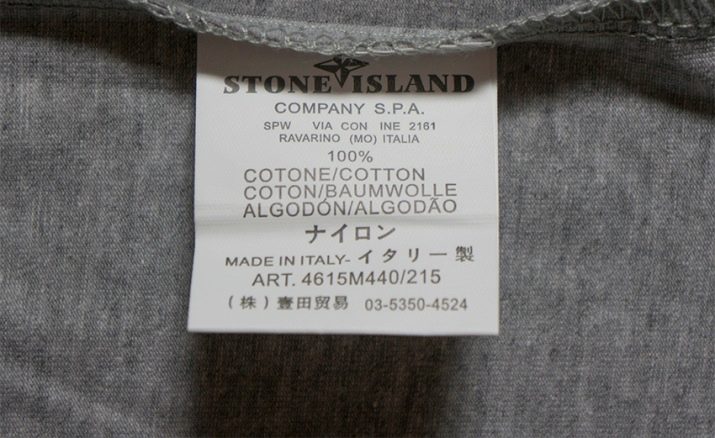What fabrics are T-shirts made of?

Natural, blended and synthetic materials are used for sewing T-shirts. From the article you will learn about the popular T-shirt fabrics, their advantages and disadvantages.
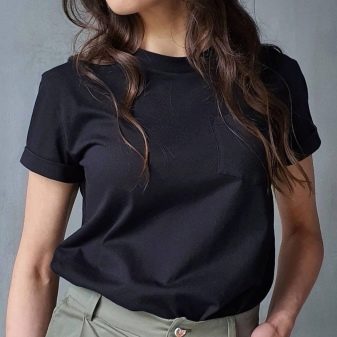

Types of synthetic materials
The basis of synthetic fabrics is artificial fibers. They are made from polymers that are produced by chemical reactions. The raw materials for the production of synthetic cloths are oil products, coal and natural gas.
The disadvantages of all fabrics made of artificial fibers include insufficient ventilation and hygroscopicity - they do not allow air to pass through well and slowly absorb moisture. Because of these features, synthetic clothing cannot be called hygienic.

In addition, there are some restrictions on wearing. Things are not recommended for allergy sufferers, people with skin diseases such as eczema, psoriasis, dermatitis.
In most cases, however, synthetic tees are safe to wear. They will not harm your health, provided that they are washed regularly and alternated with things made from natural fabrics. Consider the popular synthetic materials used for sewing men's and women's T-shirts.
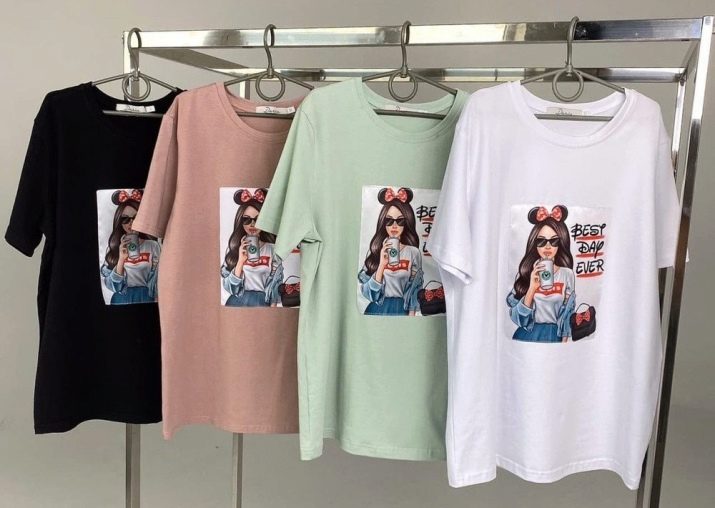
Polyester
High strength material. Sportswear, including T-shirts, is often sewn from it. Polyester clothes are practical, they do not require special care. The garment is machine washable and dries quickly and does not wrinkle, so there is no need to iron. Polyester T-shirts are bright. They do not fade during washing and retain the richness of colors when exposed to sunlight.
Other advantages of the material:
-
durability - things made of polyester do not lose their presentable appearance for a long time, they do not deform or fade, and pellets do not form on their surface over time;
-
ease;
-
resistance to dirt;
-
resistance to acids and weak alkalis;
-
strength.
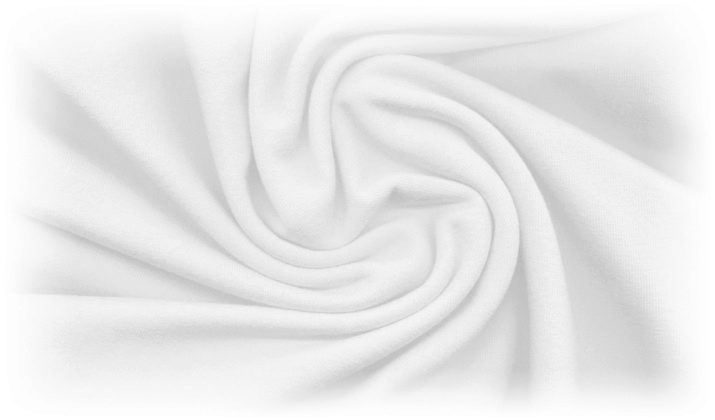
But T-shirts made of polyester practically do not "breathe", so they will be uncomfortable to wear in the heat. Their disadvantages also include rigidity, the ability to accumulate static electricity. Polyester clothing is not particularly pleasant to the body.
However, pure polyester is rarely used for wardrobe items. Most often, artificial fibers are combined with natural fibers to obtain softer and more pleasant-to-touch fabrics.
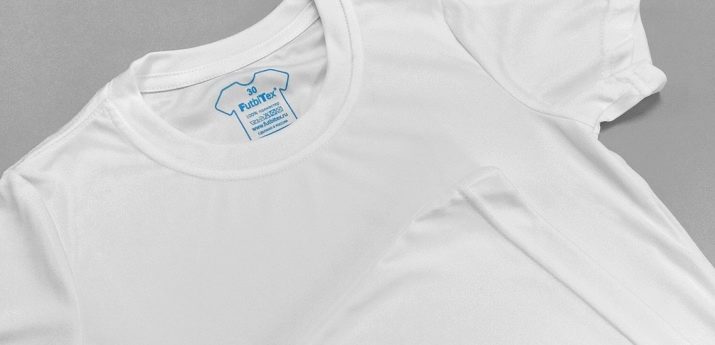
Elastane
Other names for the material are segmented polyurethane, lycra and spandex. Elastane has a number of advantages.
-
Resistant to dirt, easy to clean... Elastane T-shirts are machine washable. They practically do not wrinkle, no pellets appear on them.
-
High elasticity. The material stretches well - it can be extended up to 8 times in length, and it will easily return to its previous shape.
-
Strength and wear resistance.
-
Softness.
-
No shrinkage when washing.
With prolonged exposure to highly chlorinated water or ultraviolet rays, the structure of the material is damaged, which can cause clothing to become thinner. The disadvantages of elastane also include the ability to accumulate static, allergenicity. People with sensitive skin are advised to wear Lycra garments with care.
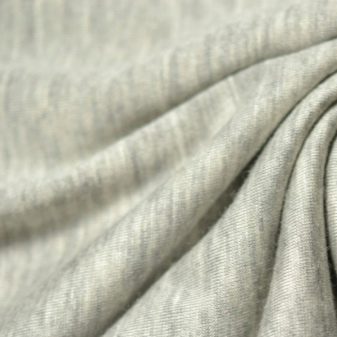

Jersey stretch
It is a blended T-shirt fabric that includes polyurethane-based fibers (spandex, elastane) and natural yarns (wool, linen, cotton, silk, and others). Such material resembles natural cotton externally and in tactile sensations, but unlike it has a number of additional advantages:
-
fast restoration of its original shape when stretched;
-
picky about leaving;
-
fast drying (clothes with the addition of synthetic fibers dry about 2 times faster than products made from natural cotton);
-
crease resistance;
-
durability.
The disadvantages include the ability to accumulate static, which is why small debris and dust "stick" to stretch T-shirts. If wool is present in the composition, then over time, pellets form on the material.
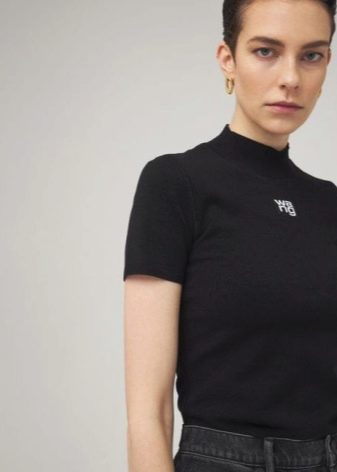

Overview of natural fabrics
Natural materials are widely used for sewing T-shirts for men, women and children. They are soft and pleasant to the body, so they do not cause irritation and are suitable for sensitive skin. Consider the popular natural fabrics used to make T-shirts.
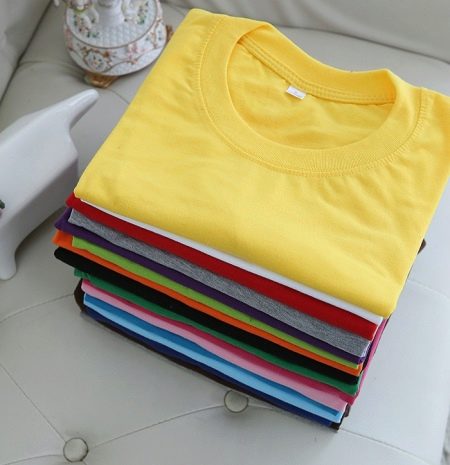
Linen
This material is 80% cellulose. Linen has a matte surface and a slight sheen. The coarse weave has a raised texture.
The advantages of flax.
-
Environmental friendliness.
-
High rates of thermal conductivity and air permeability. Linen T-shirts are comfortable to wear in hot weather. They allow air to pass through well, so that a person sweats less. Even if this happens, the material will quickly absorb excess moisture.
-
Does not accumulate statics.
-
Differs in increased wear resistance.
Pure flax has significant disadvantages. This is a high crease, shrinkage during washing. Linen clothes do not hold their shape well, they deform with frequent washing and regular wear. Another significant disadvantage of linen clothes is the high cost.
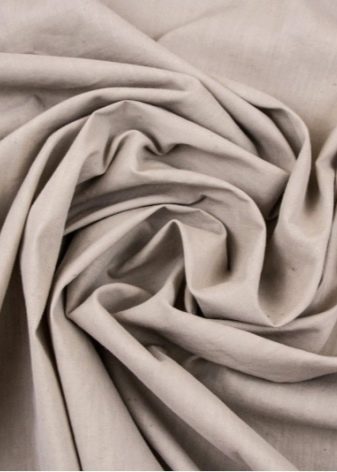
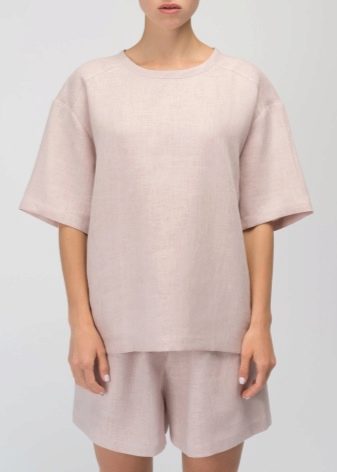
Cotton
It is a natural material from raw materials of plant origin. Cotton clothes are environmentally friendly, they do not cause allergies, so they are often bought for small children. Cotton T-shirts are lightweight and pleasant to the body. They do not trap air and absorb moisture well, making them comfortable to wear in hot weather.
Other benefits of cotton T-shirts include:
-
durability - products do not lose their original appearance for a long time;
-
undemanding care;
-
low price category.
The disadvantages of clothes made of CB fabric include the possibility of shrinkage during the first wash, high creasing and a tendency to rot when they are often in high humidity conditions.
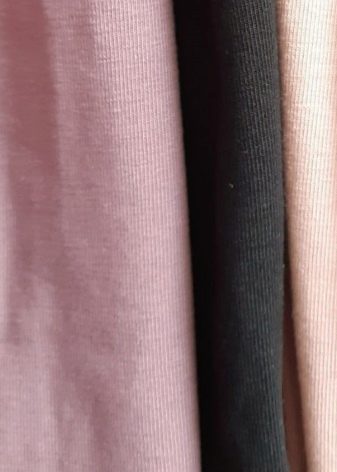
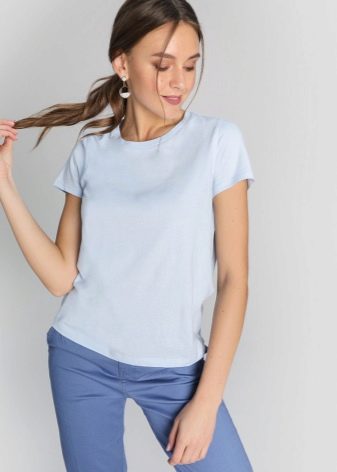
Wool
Most often, merino wool is used for sewing T-shirts. Cloths are made from fine natural fibers, which are lightweight, hygroscopic and free from unpleasant odors.
Woolen clothing has unique properties.
-
Warms up in the cold. Thin fibers and their sinuous structure form numerous air cavities that can both accumulate thermal energy and give it away (depending on the temperature difference between the environment and the human body).
-
Cools in the heat. This effect is due to air pockets that remove excess heat.
-
Well wicks away moisture... The canvas is capable of absorbing up to 30-35% moisture from its own weight.
-
Neutralizes unpleasant odors. Natural fibers have antibacterial properties - they prevent the development of microorganisms, the decomposition of which is accompanied by the release of pungent odors. Wool T-shirts will not smell bad after a workout.
The disadvantages of wool clothing include its long drying time after washing, poor abrasion resistance and high cost.
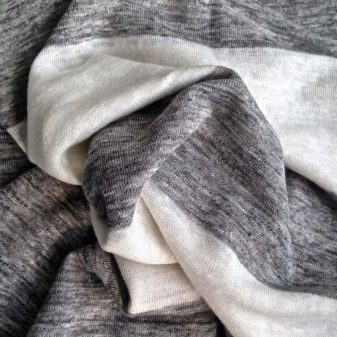
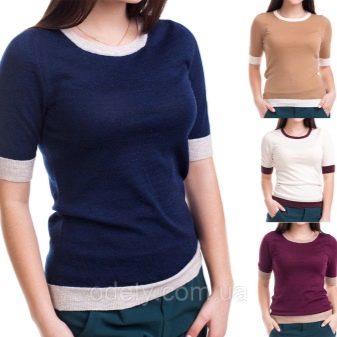
To improve the properties of products and make their prices more affordable, many manufacturers combine natural wool fibers with artificial ones. For these purposes, polyamide, lyocell and elastane are often used.
What is the best choice?
When choosing a T-shirt fabric, you need to take into account the features of the cut of the clothes, the purpose and the age group for which the finished product is intended. Basic everyday items are very different from those intended for sports. The task of the first is to be comfortable to wear, not to hinder movements when walking, and the second is to absorb moisture well and dry quickly.

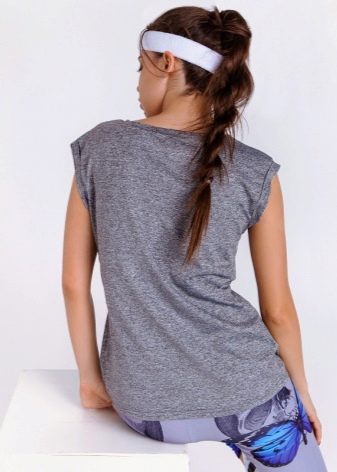
Particular attention should be paid to the choice of fabric for sewing T-shirts for children. A good choice is blended fabrics such as cotton with a combination of elastane, rayon or polyester... Materials with no more than 10% synthetic fibers are suitable. For sewing children's clothing, the cooler, interlock, and ribana are optimal. It is better not to use natural flax. Such fabric is characterized by increased rigidity, which is why it can cause irritation on the delicate skin of children.


Casual t-shirts for men and women are best made from lightweight jersey. The optimal density of the material for the manufacture of summer models should be in the range from 90 to 150 g / m3. For sewing things to wear in the demi-season, a material with a density of 150-250 g / m3 is suitable. When choosing a fabric, you should consider the subsequent decoration of clothing. For example, when choosing direct printing, a blended fabric with a predominance of cotton fibers and the addition of elastane is suitable. For sublimation, synthetic fabrics are optimal, and for silk-screening - any material.

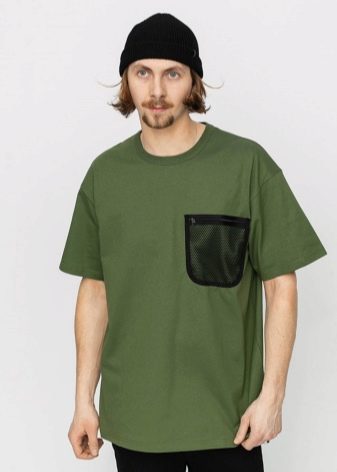
T-shirts for running, fitness, and other athletic training should not be made from natural fabrics. For such clothes, combined materials with a predominance of synthetic fibers are suitable.
Sports shirts are often made from polyester, polyamide, Lycra, or nylon. On sports T-shirts, mesh inserts are provided under the armpits, in the back and sides. They serve 2 functions: they create additional air ventilation and make clothes lighter.

Regardless of the purpose of the T-shirt, when choosing a material, you need to look at its composition. When sewing men's and women's T-shirts, it is better to refuse to use 100% natural fabrics. Even a small percentage of synthetic fibers will improve the wear resistance of the products and add elasticity.
